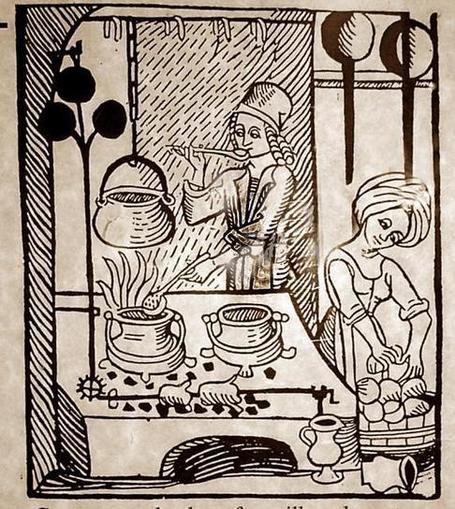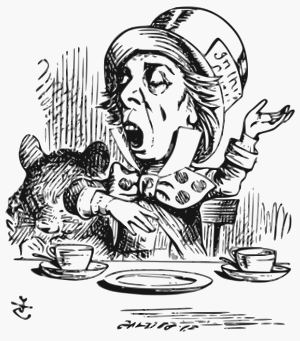A City Walk
With great pleasure I
accepted an invitation to guide a walk for Open Square Garden Weekend under the
auspices of the
London Parks & Gardens Trust in association with the
National Trust. It is now in its 15
th
year and a great opportunity to look into those gardens and squares that are
not usually open to the public, a person's curiosity is often well rewarded on this occasion.
 |
| Bracken House - London in Bloom Awards |
The City gardens are surprisingly accessible if only the
public knew it and this weekend was an
excellent opportunity to show them some of the hidden green spots that the City
workers enjoy during the week. Some of
the parks and gardens are on the map, so to speak, but it was rewarding to
discover later that my group’s ‘eyes were opened’ to their hidden charms,
unusual connections and depth of history.
I joined Marion Blair on last year’s
City Walk and I can
tell you she is a hard act to follow. We
all gathered to be allocated our group at the CIC (designed by MAKE
Architects). My colleagues chose to go towards the river first but I headed
inland.
|
|
| English: Fountain, Festival Gardens (1951) by Sir Albert Richardson, St Paul's Churchyard, London. The gardens were laid out as part of the City of London's part in the Festival of Britain. (Photo credit: Wikipedia) |
Carter Lane and
the Festival Gardens were the
forerunners of the revival of gardens in London Post World War II and a lot of
energy was put into their design for the Festival of Britain in 1951, including
the first information centre. Many changes have taken place, including the
removal of the coach park!
The Friendship Tree, planted in 1966 to commemorate the
visit to London by Mahatma Ghandi is the first of many trees and shrubs to
celebrate people and events. The latest addition is a model of the Robert Hooke
Diversity Bell, cast from Portland stone, the actual bell will be hung over the
Isle of Portland to peal when a species becomes extinct, a murmur
of sadness from all.
On to happier and grander things!
St Paul’s Cathedral Garden has full to the treetops with
interesting plants, particularly trees and it is difficult to know what to
choose. The wisteria (Chinese &
Japanese) was still blooming around the rose garden, so formal after the modern
planting outside the iron railings. The gum tree, the formantedendrohn and
strawberry tree, many North American varies (for a reason) including the
ironwood, limes and giant plane trees, and one lone Douglas fir. Proved a feat
to weave history within the branches of all these beauties. Also when my tongue tripped over the Latin
names my knowledgeable but modest group were there to assist.
 |
| Christchurch Greyfriars |
On to a favourite site for many, Christchurch Greyfriars and
it was glorious in the sunshine (yes, I forgot to mention it was sunny!). A
gasp of amazement. Drift planting in
large sections filled with same beautiful perennials, repeated three times. The
irises were magnificent; all had survived the extended winter. I think Gertrude
Jekyll would be pleased to see that her ideas are still in the forefront of
modern gardening. Did you know you should not cut your Box hedge until after
Derby Day? This was a little gem presented by one of my group.
On to Postman’s Park,
which is of course the best kept secret as secret parks go, is it not?
Reference to the three heroes celebrated in this park, one is obvious but the
other two are not!
On to the
Goldsmith’s
Hall Garden, this is owned and managed by them, but is open to all. It has
recently been restored to resemble its 1950 design by Peter Shepheard, no
cultivars or variegated plants. Have you
noticed the bird ‘pied a terre’ in the walls?
 |
Goldsmith's Hall Garden
Giant Planes grow in the old graveyard
Sunken garden originally the crypt
|
 |
| Barbican Moat |
 |
Barber Surgeon's Garden
Foxglove Tree |
We walked into the cold windy ‘tunnel’ created by Terry
Farrell’s air rights building and on to the glories of the
Barber Surgeons Physic Garden by the Museum of London. A fascinating place with herbs and plants,
some no longer part of the official pharmacopeia, but interesting to note what
is still used in modern medicine today e.g. Feverfew for migraines. I had recently learnt about the
‘
Doctrine of Signatures’ – like cures like. It was once thought if a plant
resembled part of the body it would also cure it. E.g. walnut - to help with
maladies of the brain.
Then off to take a look at what a Section 106 can achieve at
Aldermanbury Square, when a
developer must ensure that the areas around a new build provides suitable
landscaping and places of leisure at their cost. We did not linger long, a bit
of forward guiding required as the drill hammers of the construction to the
right were going ‘hammer and tongs’. We moved on quickly to the relative peace
and tranquillity of St Mary Aldermanbury.
Sadly what the Blitz left of the church moved to Fulton,
Missouri, USA but the footings of its great piers still remain and the garden
is a haven to conservation. You will also find a monument to Shakespeare’s
trusty friends Heminge and Condell who ensured his works were gathered together
for the enjoyment of the world to come.
We then took a walk via the Guildhall Yard, splendid in the
sunshine and hosting two weddings it would seem, saris, hats, dress suits and
tails, a double decker bus and a vintage car.
A great photo opportunity, I was thanked by the group for going to such
lengths to make the walk so interesting!
We passed St Lawrence Jewry’s beautiful pond garden, and yes
the ‘big fella’ , the huge carp was basking just below the surface. On to St Olaf Jewry garden, tucked in
between the Mercers Hall in Ironmongers Lane, sporting the weather vane of a long gone church, St
Mildred’s Poultry, but sadly unseen for the density of the trees.
Introduced the group to a small plot that is often overlooked and
was derelict up until 2011 when Studioweave were
commissioned to landscape. It is a mysterious and fascinating spot,
St Pancras Soper Lane, once again a
church since Saxon times, lost in the fire, rebuilt and lost again! To be
recreated as a fantastical space with the option of a ‘treasure hunt’ for
interesting carvings.
 |
Guild of Carpenters beautifully carved pews
at St Pancras Soper Lane |
We wended our weary way to the final stop in Watling Street
and past the Cordwainer statue, to Fidelity
Gardens a horticulturists dream, it is full of glowing and gleaming trees, shrubs and plants, many of which I
cannot name, all planted in just 3 feet of soil! An immaculate lawn, with a shady cool area to
the south and a sunny section towards the north, foxgloves and euphorbia
abound. Privately commissioned by
Fidelity Corporation for the use of all.
A rousing applause at the end of the walk confirmed a walk well done! Before we went our
separate ways I recommended a visit to the sixth floor of New Change for a look
at the view before going on to other gardens. Guide note:New Change good for loos on the ground and
first floor.
This walk can be booked through
http://footprintsoflondon.com/ or contact me direct at
missbtakesawalk@gmail.com












